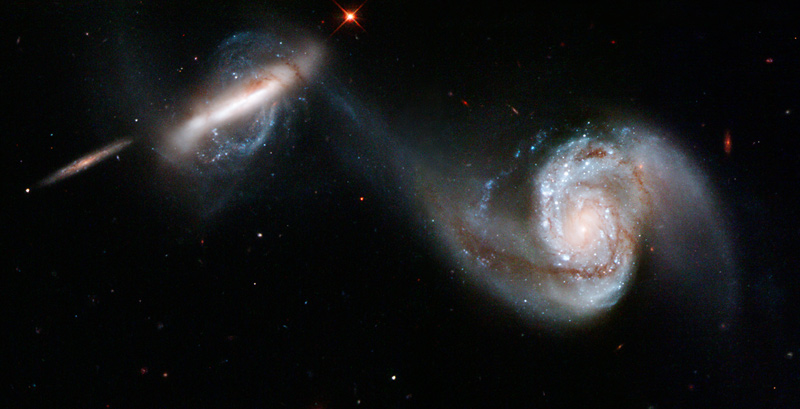Exciting New Development in Observational Techniques
Observational astronomers, engineers, and telescope experts are always working hard to better their observational equipment. Even with all of our advanced technology when looking at things at such great astronomical distances we are still limited. However, recently astronomers in Germany made a break through with a new technique for improving resolution power of telescopes, allowing us to see previously unseen objects or resolve new details of known objects.
A team of astronomers, led by Stefan Kraus and Gerd Weigelt from the Max Planck Institute for Radio Astronomy (MPIfR) in Bonn, Germany, used European Southern Observatory’s (ESO) Very Large Telescope Interferometer (VLTI) to obtain the sharpest image of the young double star Theta 1 Orionis C in the Orion Trapezium Cluster. The Theta 1 system is a massive binary system of young stars in the Orion star-forming region. In previous images of the system, even with the Hubble Space Telescope, the telescopes were not able to resolve the two separate stars in the system, which are only separated by a distance of about 20 milliarcseconds. The team was also able to derive the properties of the system including the masses of the two stars, about 38 and 9 solar masses, and also an accurate measure of the distance to the system, about 1350 light years.
The increase in resolution power came from using the technique of interferometry. This method allows one to combine light collected from several telescopes, making what is like a “virtual” telescope with a resolving power equal to that of a ground based telescope with a 200 meter mirror or a space based telescope with a 130 meter mirror. The Very Large Telescope now allows European astronomers to reconstruct images from the interferometric infrared data with the use of its near infrared beam combination instrument AMBER. This gives the astronomers a resolving power of about 2 milliarcseconds.
Early imaging interferometry was almost exclusively done with long wavelength radio telescopes because the longer the wavelength of incoming radiation the easier it is to measure the phase information of data. Examples of radio interferometers are the Very Large Array, or VLA, and The Multi-Element Radio Linked Interferometer Network, or MERLIN. As the speeds of correlators and associated technologies have improved, the minimum radiation wavelength observable by interferometry has decreased. Now this is the first time astronomers have been able to use this technique with the shorter wavelength of infrared.
So far this technique with the VLIT has only been used to study Theta 1 in the Orion region. The results obtained will be important for studying the Orion region and for theoretical models of massive star formation, as Theta 1 is a particularly massive and young star in an active star forming region. Beyond the Orion data this method for observing promises to yield new discoveries and information about many different objects and topics. It is quite exciting innovation bringing us closer to new information without the need for necessarily spending much more time and money on new equipment.
Tags: Max Planck, MERLIN Hubble Space Telescope Trapezium Cluster, Theta 1 Orionis C
